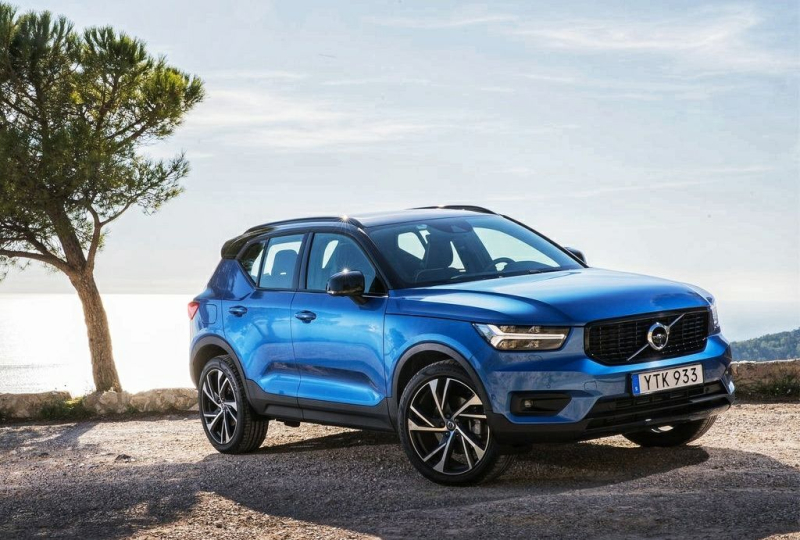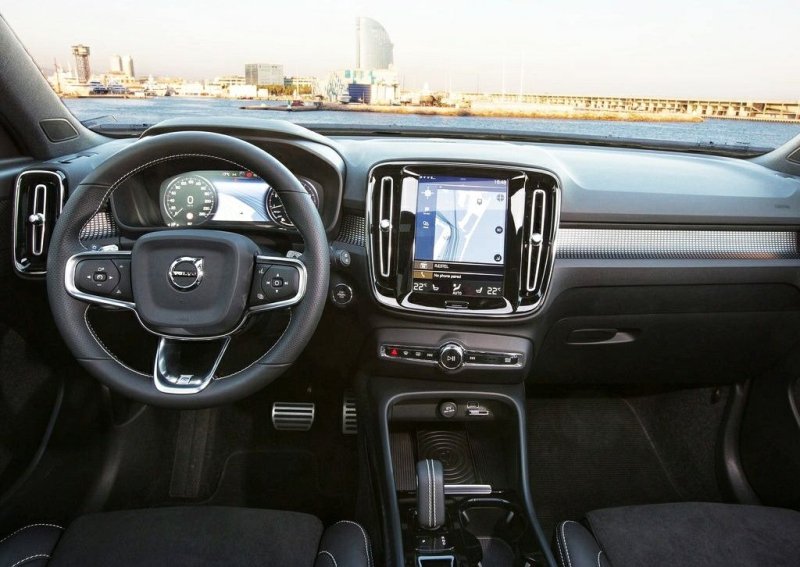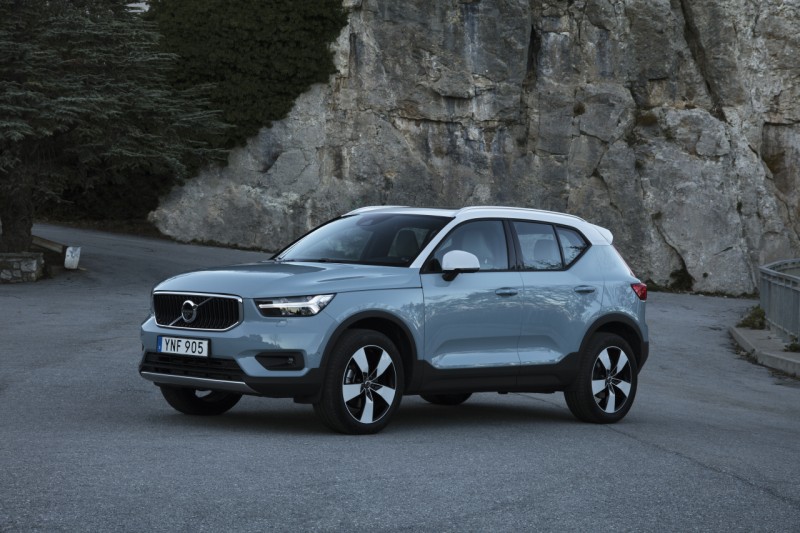Volvo´s latest offering has got the attention of the world. We drive it in Barcelona and find out just what makes it tick.
What is it?
The first car from Volvo’s all-new Compact Modular Architecture (CMA) is the XC40. the all-new compact four-door luxury crossover SUV brings in new winds of change for the Swedish major. This is primarily because the new platform gave them the freedom to engineer it from the ground up. This means an impressive array of customisation choices, new interior options, and some bold new exterior paint options. Besides, the signature Thor’s Hammer LED headlamps and sharp LED tail-lamps identify it unmistakably as a modern Volvo.
How big is it?
The all-new XC40 measures 4,425 mm long, 1,910 mm wide and 1,652 mm high, with a wheelbase of 2,702 mm. This proportions have allowed it to be designed in a incredibly stylish manner, while affording good passenger room on the inside. It also has a very generous 211 mm of ground clearance, an approach angle of 21.7°, departure angle of 30.4° and a breakover angle of 21.9°. With numbers like those, it isn´t really afraid of the rough stuff. It also has a 54-litre fuel-tank, with a pair of frugal engines ensuring a good maximum range.
What drives it?
Initially, the XC40 will be offered with two 2.0-litre drivelines: a T5 turbo-petrol with 247 PS at 5,500 rpm and 350 Nm between 1,800-4,800 rpm, and the D4 turbo-diesel with 190 PS at 4,000 rpm and 400 Nm between 1,750-2,500 rpm. An eight-speed automatic transmission and all-wheel-drive are standard. Claimed figures state the XC40 T5 AWD will do 0-100 km/h in a 6.5 seconds and hit a top speed of 230 km/h. Numbers for the XC40 D4 AWD are 7.9 seconds and 210 km/h, respectively. Besides, you also get a long list of standard safety equipment, including radar- and laser-based driver-assistance systems.
What’s it like to drive?
We drove the new both the XC40 D4 AWD diesel and T5 AWD petrol around Barcelona and came away impressed with their quality, fit-and-finish and levels of attention-to-detail. Apart from the spacious cabin and comfortable seats, the front ones also get extendible thigh support, the XC40 offers a high seating position for improved visibility and that SUV feel. The Dynamic chassis was on the D4 AWD we drove, while the T5 AWD R Design gets the Sport chassis. We also had the D4 in its Momentum trim, with 19-inch white-painted five-spoke 235/50 R19 Michelin Latitude Sport 3 tyres. The T5 R Design gets 245/45 R20 Pirelli P-Zero rubber with sharper designed polished alloy wheels.
Thought. More than anything else, that’s what’s gone into the XC40’s interior. The layout inside is very familiar if you’ve been in a new Volvo. The turn-to-start knob on the centre console, the large full-colour tile-select touchscreen, the twin displays in front of you behind the very familiar steering wheel with just as familiar buttons for the adaptive cruise control and other bits, all familiar. Yet, it’s been built from the ground up so the designers had free-rein to change things for the better.
They’ve relocated the door speakers to the top so that the door pockets can hold more of whatever you want to put in there – books, newspapers, umbrellas, water bottles (plural) – and there are more smart spaces around: cup-holders, space for the key, a wireless charging pad for your phone, slots for bank cards, under arm-rest storage, and even a trashcan! Yes, just ahead of the arm-rest is mini bin that can be used to stash bits you’d like to discard but didn’t want to throw or pile into the door pockets. Or, simply remove it to make space for another cup. Before I forget, it’s also customisable – black, beige, red, and combinations thereof are available – and not just for the seats.
The cabin is quite large and spacious. The front seats are brilliant. The panoramic sunroof makes the cabin feel even larger and airier. The A-pillars are not that thick so visibility is good (the fat C-pillars make up). At the rear, the seats are good, but lack the thigh support the fronts offer. Yet, room was not an issue even for my six-foot frame. The rear arm-rest opens out and reveals a ski-hatch. Of course, that’s behind a layer of cloth to hide the prongs of the centre head-rest – the only bit I didn’t like, personally. Nothing a patch of Velcro won’t fix. Anyway. It’s got a huge boot: 460 litres with the second row up, and 1,336 litres with the second row down. Enough for most weekend getaway needs and more. The power tail-gate and load-separators help, too.
Cousin? It’s got the familiar Volvo built-like-a-safe feel and the quality of leather upholstery and interior bits – trim, plastic, and other material – don’t feel any less special that what you would find in an XC60. Did I mention it’s built in Ghent in Belgium? Guess what else they make there? Cousin!
A compact crossover for the active family doesn’t need a V8. Having come to terms with having said that, and the fact that the environment is in peril, the new range of Drive-E motors make sense. They’re still 2.0-litre fours, with 1.5-litre threes set to arrive later on. Petrol and diesel share the same bore, stroke and, hence, displacement – 1,969 cc. With its 10.8:1 compression ratio, the T5 petrol puts out 247 PS and 350 Nm. The diesel, with its higher 15.8:1 ratio to burn without sparking, makes 190 PS and 400 Nm. Both the petrol and diesel have a wide peak torque band and are paired to the familiar eight-speed automatic transmission, with only a slightly different final drive between them. Intelligent all-wheel-drive is standard, and, as with all Volvos, is entirely front biased.
Promised performance? The diesel will do 0-100 km/h in 7.9 seconds and 210 km/h. The petrol, 6.5 seconds and 230 km/h. Claimed efficiency figures are 20 km/l and 14 km/l respectively.























Leave a Reply